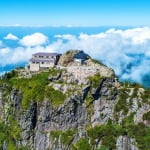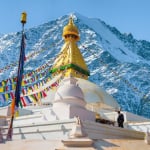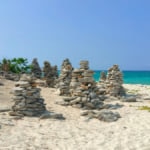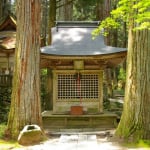Name: Kochi Castle
Address: 1-2-1 Marunouchi, Kochi City
Official Website: http://kochipark.jp/kochijyo/
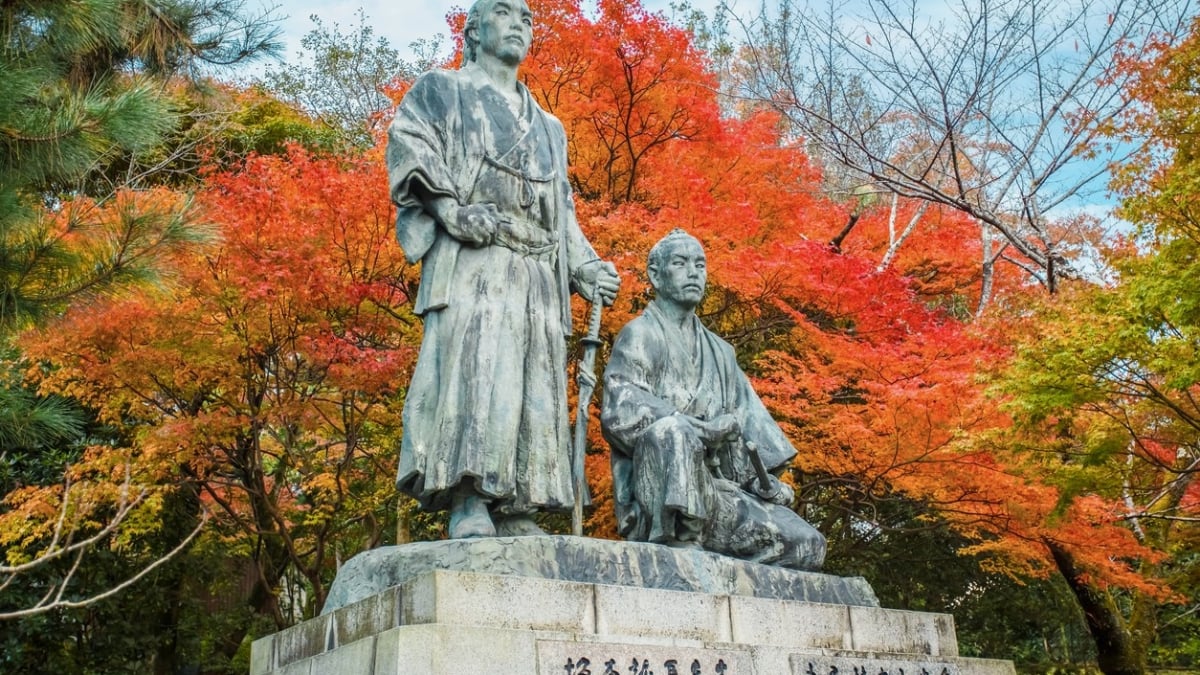
Feel the History of Kochi, the Land of Mountains and Sea – 6 Must-Visit Historical Spots!
Kochi Prefecture stretches long from east to west and is often known as a "land of the sea" because of its Pacific coastline. However, most of the region is mountainous, with mountains reaching close to the coast, making it a typical "mountain country." This geography has allowed numerous rivers—like the famed Shimanto River, often called Japan’s last pristine river—to flow abundantly through the area, preserving natural scenery that represents the heart of traditional Japan. Kochi is also rich in local cuisine such as Katsuo no Tataki (seared bonito) and cultural traditions like the Yosakoi Festival.
Additionally, it has a proud legacy of producing historical figures, including Sakamoto Ryoma and Nakaoka Shintaro from the end of the Edo period, and influential Meiji-era figures like Iwasaki Yataro and Itagaki Taisuke. The region is dotted with many historical landmarks. Here are 6 historical sites in Kochi you shouldn’t miss when exploring the area’s deep and dramatic past!
table of contents
[x] close
Feel the History of Kochi, the Land of Mountains and Sea – 6 Must-Visit Historical Spots!
- 1. Kochi Castle – The Most Distinguished Castle in the Nankaido Region
- 2. Katsurahama Park – Where the Statue of Sakamoto Ryoma Stands Tall
- 3. Sakamoto Ryoma Memorial Museum – Dive Deep into Ryoma’s History
- 4. Birthplace of Iwasaki Yataro – The Origin of the Mitsubishi Conglomerate
- 5. Wakamiya Hachimangu Shrine – Where Motochika Prayed Before Battle
- 6. Kochi Liberty and People’s Rights Museum
- ◎ Summary
1. Kochi Castle – The Most Distinguished Castle in the Nankaido Region
Overlooking the Kochi Plain, Kochi Castle is celebrated as the finest castle in the Nankaido region and is listed among Japan’s Top 100 Castles.
It was built beginning in 1601 by Yamauchi Kazutoyo, the first lord of the Tosa Domain, who was rewarded after the Battle of Sekigahara. Though a massive fire in 1727 destroyed most of the castle, it was rebuilt to its original design by 1753. Despite multiple natural disasters and wars, the castle has maintained its dignified form.
It is one of the few castles in Japan where the original main keep and 15 other buildings remain intact, earning designation as Important Cultural Properties. Statues of Yamauchi Kazutoyo, his wife, and Itagaki Taisuke can be seen within the prefectural history park.
2. Katsurahama Park – Where the Statue of Sakamoto Ryoma Stands Tall
Katsurahama is one of Kochi’s most scenic coastal spots, featuring a crescent-shaped beach between Cape Ryuo and Cape Ryuto, famous for its moonlit views. The entire area is maintained as a park and includes attractions like the Sakamoto Ryoma Memorial Museum, a fighting dog center, and Katsurahama Aquarium.
Most notably, the 13.5-meter statue of Sakamoto Ryoma on Cape Ryuto is a symbolic site, even for non-history buffs. Built in 1928 through public donations, the statue looks out across the vast Pacific Ocean, embodying Ryoma’s dreams that could not be contained by Japan alone. Each year around Ryoma’s birthday and death anniversary (both on November 15), a special viewing platform is set up so visitors can look out at the sea from Ryoma’s perspective.
Name: Katsurahama Park
Address: Katsurahama, Urado, Kochi City
Official Website: http://www.city.kochi.kochi.jp/soshiki/39/katsurahamakouen.html
3. Sakamoto Ryoma Memorial Museum – Dive Deep into Ryoma’s History
Located near Katsurahama, the Kochi Prefectural Sakamoto Ryoma Memorial Museum is dedicated to the life and legacy of the famous historical figure. It’s a must-visit for understanding his journey from birth to his assassination, and how his ideas shaped the future.
Permanent exhibits include handwritten letters to his siblings and other valuable artifacts, along with dramatic videos that showcase his life’s path. It’s a place to fully appreciate Ryoma’s bold ambition to “go out into the world.”
Name: Sakamoto Ryoma Memorial Museum
Address: 830 Jōyama, Urado, Kochi City
Official Website: http://www.ryoma-kinenkan.jp/
4. Birthplace of Iwasaki Yataro – The Origin of the Mitsubishi Conglomerate
Located about 3 km inland from central Aki City, the birthplace of Iwasaki Yataro is a key historical site. Iwasaki, who lived during the same time as Sakamoto Ryoma, later founded what became the Mitsubishi Group and was hailed as the “King of the Sea of the East.”
His birthplace is a traditional thatched-roof house built by his great-grandfather around 1795 and remains today as a glimpse into life back then. The family crest carved into the warehouse roof tiles here—combining symbols of the Iwasaki and Yamauchi clans—eventually evolved into the Mitsubishi logo. There's even a stone layout in the garden said to represent the islands of Japan, reflecting Yataro’s dream of national dominance.
Name: Birthplace of Iwasaki Yataro
Address: 1631-1 Inokuchi Kou, Aki City
Official Website: http://www.akikanko.or.jp/kanko/yatarouseika.html
5. Wakamiya Hachimangu Shrine – Where Motochika Prayed Before Battle
Wakamiya Hachimangu Shrine, located in Kochi City, is closely connected to Chosokabe Motochika, a renowned warlord who unified Shikoku. He reportedly prayed here before heading into battle.
As a child, Motochika was thought to be weak and quiet, but before his first battle in 1560, he prayed for victory at this shrine—and won gloriously. From then on, he returned to pray here before every campaign.
A highlight is the statue of Motochika’s first battle, built in 1999 to commemorate 400 years since his death. The statue shows him grasping a spear in one hand and reaching toward a map of Shikoku with the other—a powerful pose reflecting his ambition.
Name: Wakamiya Hachimangu Shrine
Address: 6600 Nagahama, Kochi City
Official Website: http://wakamiya-kochi.com/
6. Kochi Liberty and People’s Rights Museum
The phrase “Freedom comes from the mountains of Tosa” symbolizes Kochi’s role as the birthplace of Japan’s Freedom and People’s Rights Movement, the first grassroots democratic movement in Japan, led by figures like Itagaki Taisuke.
Built to mark the 100th anniversary of Kochi’s cityhood, the Kochi Liberty and People’s Rights Museum preserves documents and artifacts related to this political revolution. Exhibits include a proposed draft constitution, the dagger used in an attack on Itagaki, and a sake bottle labeled with the phrase “Long live freedom.” The museum is spacious and easy to explore, and it’s only 15 minutes from JR Kochi Station via tram or bus—making it an accessible spot to experience Japan’s political awakening.
Name: Kochi Liberty and People’s Rights Museum
Address: 4-14-3 Sanbashi-dori, Kochi City
Official Website: http://www.i-minken.jp/index.html
◎ Summary
Kochi’s history spans from ancient times through the Sengoku period, the end of the Edo era, and into modern Japan. Its long east-west geography holds a wealth of historical sites where you can reflect on the lives of great people from the past.
Whether you’re savoring local dishes from the mountains and sea, admiring traditional culture, engaging with the lively and warm-hearted locals, or immersing yourself in nature’s seasonal beauty, Kochi promises a rich and unforgettable historical journey.
RELATED ARTICLES
REGIONS
CATEGORIES
FEATURED ON Kochi
-
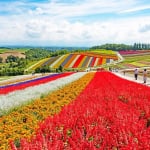
Where will you go for the summer vacation? Introducing recommended spots for domestic travel
-

Recommended 4 tourist spots around Kitagawa Village, Kochi Prefecture
-
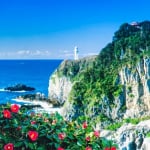
Classic Sightseeing in Tosashimizu City! 7 Recommended Tourist Spots Around Cape Ashizuri
-
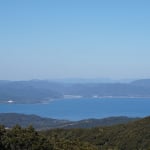
9 Recommended Sightseeing Spots Around Tosashimizu City, Kochi Prefecture – The Southernmost Port Town of Shikoku
-
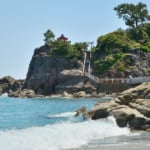
6 recommended sightseeing spots around Katsurahama. If you’re visiting Kochi City, you can’t miss these!
MOST POPULAR ON Kochi
-
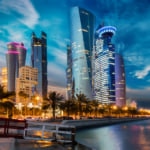 1
1Doha: Must-see Attractions in the Capital of Qatar
-
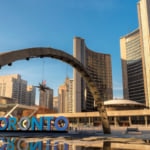 2
2Toronto: 10 Things to do in this Picturesque Canadian City
-
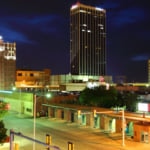 3
3Amarillo: A City Famous for It’s Amazing Canyons, Great History and Music
-
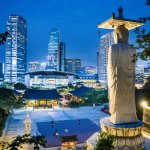 4
4South Korea: Dazzling Scenery, Rich Culture and Fascinating History
-
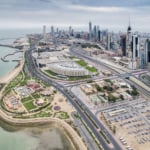 5
5Kuwait: A Country in Middle East Asia Famous for Hot Sand Dunes and Stunning Cityscape

